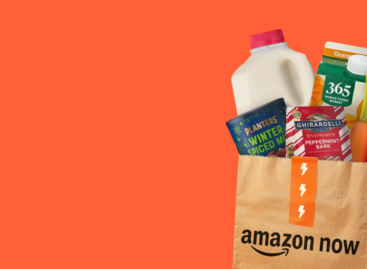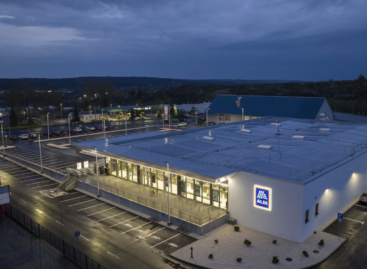Magazine: Retail panorama 2018
The biggest change in Hungarian retail trade last year was discount supermarkets becoming the No.1 channel. This was the result of long-term processes and changes in different consumption trends.
![]()

Ágnes Szűcs-Villányi
managing director
Nielsen
Hungarian consumer confidence peaked in the 2nd quarter of 2018 and ended the year at 75 points – 1 point lower than it had been at the end of 2017. There was a 7.2-percent sales growth (in value) in the Hungarian FMCG market in 2018 – back in 2017 the growth was 5.9 percent. Food value sales were up 7 percent and household chemicals and cosmetics value sales augmented by 8.1 percent. The food sector expanded by 7 percent, which was more than the growth rate of the Hungarian GDP. It is still true that consumers spend a considerable proportion of their income on FMCG products.
In Hungary 26 percent of consumers are buying FMCG products online and another 8 percent plan to do so in the future. In the category of personal hygiene products these proportions are 27 percent and 6 percent, while in the food category they are 10 percent and 5 percent. Expectation is that by 2020 three quarters of Hungarian households will have an internet connection and the number of per capita mobile phones will increase from 1.19 to 1.21 by then. These changes are likely to result in more online purchases.
By the end of last year discount supermarkets acquired a 24.7-percent share in total FMCG sales, having increased their share by 2.2 percent to overcome hypermarkets that were at 24.6 percent. In food sales discounters had a 27.3-percent share – the growth was 2.4 percentage points. Hypermarkets’ share in food sales was 24.3 percent. Drugstores lead the way in sales of household chemicals and cosmetics with a 40-percent share, followed by hypermarkets – discount supermarkets only had a 14-percent share in this category.
Sales in the food categories audited by Nielsen were up 7 percent in value and 2.9 percent in volume last year. The No.1 category was processed meat with a value of nearly HUF 300 billion, followed by beer and cheese. Sales of household chemicals and cosmetics jumped 8.1 percent in value but volume sales stayed put. Detergents were the top category, followed by toilet paper and fabric softener.
In the FMCG sector sales of private label (PL) product grew faster than branded product sales, but PL products’ share didn’t reach 30 percent yet. In the case of PL groceries value sales augmented by 9 percent and branded product sales were up 6 percent: the shares of the two categories were 29 and 71 percent, respectively. Value sales of PL household chemicals and cosmetics increased by 9 percent and branded product sales were up 8 percent: the shares of the two categories were 18 and 82 percent, respectively. As for food sales realised by discount supermarkets, more than two thirds were PL products; actually this performance was nearly 2 percentage points worse than a year before. Discounters’ household chemicals and cosmetics sales exceeded 50 percent – sales dropped nearly 4 percent.
Besides basic food products, the main drivers of buying are health-focused and convenience products. Shoppers are buying more and they go shopping more frequently – we visit a retail outlet at least twice a week. Hungarians still like promotions very much. According to the Nielsen study Shopper Trends, Hungarians are less open to trying new products than the European average: less than 20 percent of shoppers have this trendsetter attitude; 72 percent of Hungarians rarely buy new products. The face of Hungarian retail is changing, there is growing demand for convenience, the health trend and environmental consciousness. //
Related news
120 million online orders in 2025, 8% domestic and 22% import growth: here is the most comprehensive domestic research on e-commerce
🎧 Hallgasd a cikket: Lejátszás Szünet Folytatás Leállítás Nyelv: Auto…
Read more >Amazon tests delivery in half hour or less
🎧 Hallgasd a cikket: Lejátszás Szünet Folytatás Leállítás Nyelv: Auto…
Read more >The big winners of Hungarian e-commerce are the customers: GLS and DPD have signed a strategic partnership for even more flexible package collection
🎧 Hallgasd a cikket: Lejátszás Szünet Folytatás Leállítás Nyelv: Auto…
Read more >Related news
How do young adults celebrate?
🎧 Hallgasd a cikket: Lejátszás Szünet Folytatás Leállítás Nyelv: Auto…
Read more >Vajda-Papír celebrates Ooops!’s 15th anniversary with a hybrid AI campaign
🎧 Hallgasd a cikket: Lejátszás Szünet Folytatás Leállítás Nyelv: Auto…
Read more >Pre-holiday shopping at up to half price
🎧 Hallgasd a cikket: Lejátszás Szünet Folytatás Leállítás Nyelv: Auto…
Read more >






